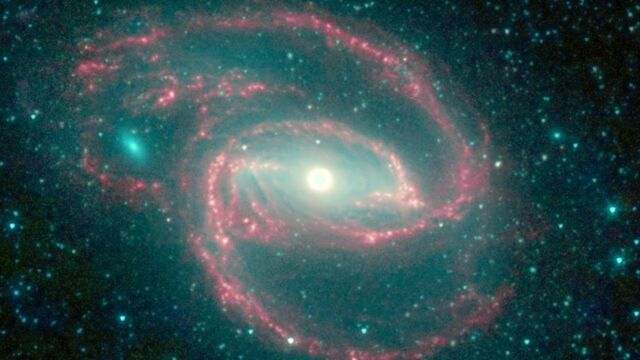NASA reveals what a black hole really sounds like with this remix (VIDEO)

The sound of a massive black hole in Perseus galaxy has been remixed and released for NASA’s Black Hole Week earlier this May, and you might not be ready for its deep, haunting notes.
NASA states that it was back in 1993 that astronomers for the first time, found sound waves in a supermassive black hole while working from NASA's Chandra X-ray Observatory. The black hole in question resides in a cluster of galaxies called Perseus, which is about 250 million light waves away from Earth.
Discover our latest podcast
The latest sonification shared by NASA is a remix of the actual sound waves discovered from NASA's Chandra X-ray Observatory.
More under this adMore under this adRemixed sonification from the black hole in Perseus galaxy
According to NASA, there is a popular perception that there exist no sounds in space. This according to them, is a misunderstanding which arises from the fact that space is essentially mostly a vacuum, which implies that there exists no medium in space through which sound can travel.

However, a galaxy cluster actually happens to have a huge amount of gas within which are enclosed thousands of galaxies. These gases provide the necessary medium for sound waves to be able to travel. As NASA states that
Astronomers discovered that pressure waves sent out by the black hole caused ripples in the cluster’s hot gas that could be translated into a note – one that humans cannot hear some 57 octaves below middle C.More under this adMore under this ad
The process through which the astronomical data that NASA collects is translated into sound is called sonification.
Black hole sonification by NASA
The misconception that there is no sound in space originates because most space is a ~vacuum, providing no way for sound waves to travel. A galaxy cluster has so much gas that we've picked up actual sound. Here it's amplified, and mixed with other data, to hear a black hole! pic.twitter.com/RobcZs7F9e
— NASA Exoplanets (@NASAExoplanets) August 21, 2022
NASA states that in the new sonification of Perseus galaxy, which it released back in May for Black Hole Week, the sound waves extracted by astronomers are made audible to humans for the first time. So it is now possible for us earthlings to clearly hear what a black hole sounds like and yes, it is as scary and daunting as you might have imagined a black hole to sound like.
More under this adMore under this adRegarding the process, NASA states,
The sound waves were extracted in radial directions, that is, outwards from the center. The signals were then resynthesized into the range of human hearing by scaling them upward by 57 and 58 octaves above their true pitch.
Another way to put this is that they are being heard 144 quadrillion and 288 quadrillion times higher than their original frequency. (A quadrillion is 1,000,000,000,000,000.)More under this adMore under this ad
Read more:
⋙ Very rare 'aurora storm' spotted from the International Space Station
⋙ NASA reveals deepest image of the universe from new space telescope